Time 8:35 a.m. Cause Gas leak Date 21 November 1996 Total number of deaths 33 | Non-fatal injuries 69 Injuries 69 | |
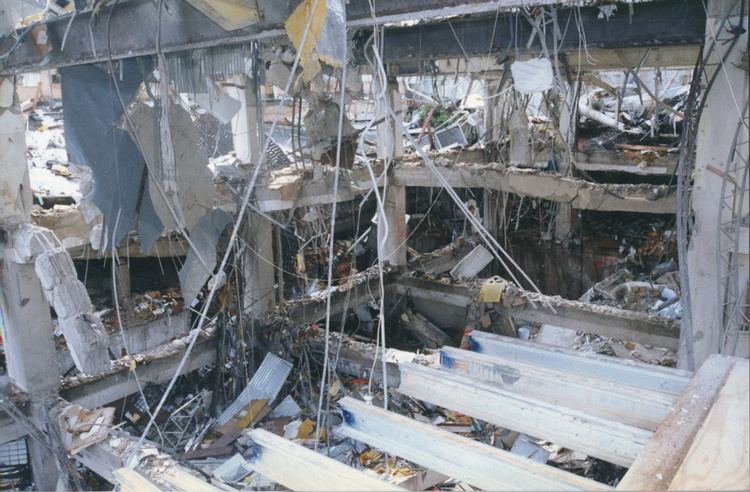 | ||
Property damage Several buildings collapsed Verdict Explosion caused by failure of San Juan Gas Company, Inc., (1) to oversee its employees' actions to ensure timely identification and correction of unsafe conditions and strict adherence to operating practices and (2) to provide adequate training to employees Similar Collapse of Hotel New World, Cleveland East Ohio Gas expl, Edison - New Jersey na, King's Cross fire, New London School ex | ||
The Humberto Vidal explosion (sometimes also referred to as the Río Piedras explosion) was a gas explosion that occurred on November 21, 1996 at the Humberto Vidal shoe store located in Río Piedras, Puerto Rico. The explosion killed 33 and wounded 69 others when the building collapsed. It is one of the deadliest disasters to have occurred on the island.
Contents
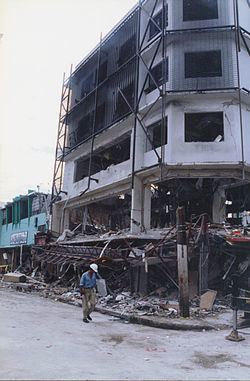
Explosion

The explosion occurred at about 8:35am, on Thursday, November 21, 1996 in the middle of a bustling commercial sector of Río Piedras. The six-story building that housed the Humberto Vidal shoe store, a jewelry store, a music shop store and the head offices of Humberto Vidal was virtually destroyed and eventually it was demolished.
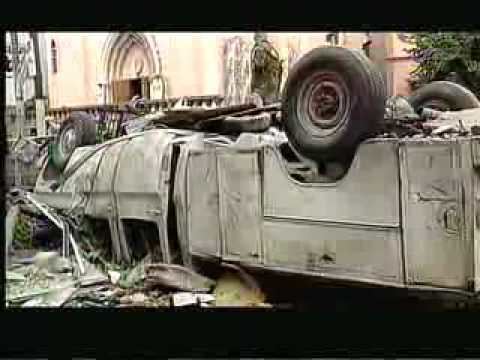
The immediate theory was that the explosion was caused by a bomb planted by local terrorists or even arson due to previous deliberate acts in the past. However, there was no trace of explosives, nor were there flammable materials an arsonist could have used.
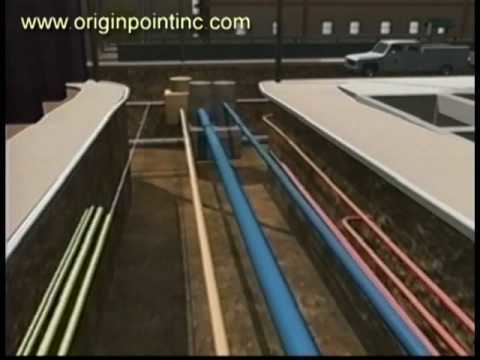
United States President Bill Clinton declared Puerto Rico a disaster area, which ensured the receipt of federal aid to help the victims, including the National Transportation Safety Board (NTSB) which launched an investigation. San Juan Gas Company, owned by Enron Corporation, denied any responsibility claiming that the building had no gas service at the time of the explosion.
Casualties
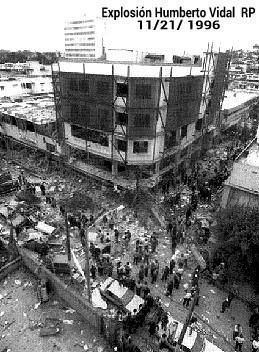
In the end, the explosion killed 33 victims and wounded 69 others. Most of the victims were inside the building at the moment of the explosion, but others were in the streets surrounding the building. After the explosion, bodies of victims were placed on the pavement in front of the nearby La Milagrosa Church, where Cardinal Luis Aponte Martínez administered last rites. "There were just parts of bodies lying in the street, torsos, bones, cars blasted against the building," Police Chief Pedro Toledo said. Owners of the shoe store said they had reported a gas leak to the San Juan Gas Company several days before the explosion.
Investigation

The investigation of the National Transportation Safety Board (NTSB) revealed that several persons had reported an alleged gas leak in the building in the days leading up to the explosion. The store had no gas supply, so another nearby gas line looked like the culprit. It was discovered that a gas pipe which carried the heavier-than-air propane gas was broken. A few years earlier, a water main was installed below, which bent the pipe in the process. When the pipe had been installed, it was already in tight bend, adding to its stress levels. The addition of the water main caused it to break.
The explosive gas was able to get into the shop basement from migrating around and over pipes, causing the bad smell. However the biggest problem was that the gas company technicians were unable to detect the gas before the blast. Investigators discovered that holes used to detect gas below ground were only 46 centimetres (18 in) deep when the gas was about 120 centimetres (47 in) down, therefore, there was no way it could be detected in this manner. The most crucial error came in the basement inspection. The technician was supposed to turn his equipment on in fresh air before entering the building, but he instead turned it on once inside the building, thus detecting no gas.
The ignition source was an air conditioning switch with heated wiring, causing the whole building to be stripped to its skeleton.
The San Juan Gas Company vehemently denied responsibility and suggested that it could have been caused by sewer gas instead. However, the lighter-than-air sewer gas collects in the ceiling, while propane collects on the floor. The explosion showed that stored shoes were tossed up, meaning that the fuel had to be at ground level. An upwards bent beam was also crucial to determining that the blast had come from below.
Aftermath
The San Juan Gas Company was sued by the victims' families and owners of the businesses affected. There were a total of 1,500 lawsuits presented. Through the process, the company admitted no wrongdoing. Of all the lawsuits, 725 were settled outside courts, while 101 complaints were ruled against the company. The remaining lawsuits were settled in 2002 for $28 million. There was also criticism of the company's training practices, which management promised to rectify.
According to a city resolution, all gas lines in Río Piedras were removed to avoid further tragedies. The area of the explosion now has a mural in remembrance of the people who died.
The disaster was examined by the Puerto Rico Gas Explosion episode of documentary series Seconds From Disaster on the National Geographic Channel.
